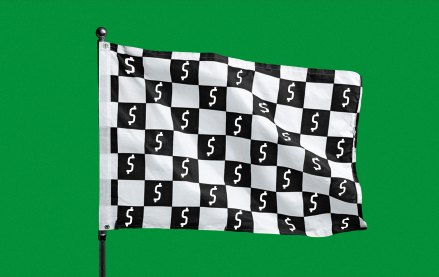Register by Jan 13 to save on passes and connect with marketers from Uber, Bose and more

This Future of Marketing Briefing covers the latest in marketing for Digiday+ members and is distributed over email every Friday at 10 a.m. ET. More from the series →
Nostalgia marketing isn’t a new trend. Reboots, retreads and riffs on the past are all too common, appearing everywhere from the big screen (a reboot of Alien and sequels to Beetlejuice and Twister are currently in theaters) to the small screen (Pepsi recently recreated its iconic “Gladiator” spot this time with athletes instead of pop stars; the VMA’s red carpet was littered with looks that referenced past stars’ iconic garb, to name a few) so often that it’s hard to keep up.
No small amount of the dominant cultural conversation looks back to a time that once was – or, let’s be real, probably never was but it’s easy to idolize the past – so it makes sense that brands would do it too.
There are myriad reasons why. To name a few: The lack of a monoculture and rise of cultural niches via social channels means fewer mass references, leading marketers to revert to past big moments; the pace of today’s pop culture trends as well as life in general has people wistful for a simpler time; it’s harder than ever to get consumers’ attention — references help brands find that short cut to stand out; and the risk of new can be seen as greater than leaning on the tried and true of the past.
However, even as marketers look for ways to actually capture audiences’ attention — and see nostalgia marketing as a shortcut to do so — it can be a crutch. If they continually lean on the past without building for the future, there won’t be anything new to reference five, ten or fifteen years from now. Marketers need to find a balance between referencing the past and thinking of innovative new ways to move brands forward.
“Nostalgia is like stepping in a time machine, and that’s a trip that will only be meaningful to the people who experienced it during the first go around,” said Maddie McDowell, creative director at 72andSunny. “You’re boxing yourself out of new growth audiences. What I find more successful is the ‘newstalgia’ approach which taps into the familiarity and timelessness of what’s loved about your brand, but finds a way to reinvent or reinterpret it to meet the cultural moment.”
Brands like See’s Candies and Barbie are examples of brands that have challenged McDowell to “walk that delicate line” of past reference and new approach.
Finding a fresh spin on a past reference where there’s still a new idea at play is key to avoiding the trap of nostalgia and getting a brand stuck in the past, explained Sean McDonald, global chief strategy officer at independent ad agency Rethink.
“[Nostalgia is] a big reason we’re the international brand that we are today,” said Luka Dukich, vp of content for the Chicago Bulls. “But at the same time, we’re focused on the future. We want to build our brand and you don’t want to be like a nostalgia brand.”
Dukich continued: “There’s a place for it. It’s part of our history. Anything that we put out with the ‘90s Bulls and all those players, all those personalities, people really respond to it. We like to joke, we could put out a photo of Michael Jordan every day and we would be the number one ranked social team because everybody responds to it immediately. But you don’t want to be constantly living in the past. So it’s a balance. We find ways to do it.”
While “reboot culture is a thing,” as Teddy Stoecklein, executive creative director at full service shop VIA, notes, it’s rare for there to be reverence for an ad the same as for other facets of culture. “Brands tend to fail when they think that reviving their own work from the past is nostalgic,” said Stoecklein, adding that some references can be “too inside baseball” that “ad vets loved” but don’t work for people outside advertising.
And not all brands are up for leaning on nostalgia marketing. “A lot of clients are afraid of nostalgia because as everybody’s trying to be modern, hip and cool, they’re afraid that nostalgia will make them feel old and outdated,” said Jesse Unger, head of strategy, Mother Los Angeles, adding that even with that worry she’s bullish on brands’ use of it. “Nostalgia can be really powerful if you think about [it] as trying to give people a sense of living a simpler, more relaxing life with less responsibility.”
That appeal makes sense. At the same time, the changed – and continually changing – media landscape has only made it harder for brands to stand out. If marketers can find a quick win through nostalgia, it’s easy to see why they would try.
But it begs the question: what will be the future references? If everyone is in their own cultural niche, how will marketers connect with masses in years ahead?
“We live in a time where, with the advent of personalized, algorithmically driven social feeds, we each have our own Oprah,” said Brendan Gahan, founder of Creator Authority and former chief social officer at Mekanism. “There are few collective experiences, celebrities or moments. Brands that want to maintain longevity are going to have to navigate mass sales in a niche media consumption environment.”
3 Questions with Vineet Mehra, CMO of fintech firm Chime
What’s the customer acquisition and direct response strategy?
Without getting into numbers, we are a very big marketer. We obviously aren’t as big a marketer as the big banks, but I’ll tell you it’s working really well. We have built awareness to the levels of a lot of the big banks already and they’ve been at it for 100 years. And on the direct-response side, I’d say we’re one of the most data-enabled [financial tech companies]. We use a lot of data science models and things like that to capture that awareness at the bottom of the funnel and use direct-response marketing to capture that intent and bring them into Chime as new members.
Search advertising is being fueled by generative AI. AI company Perplexity has already laid out plans and Reddit may soon be on that path. Any plans to test these new channels?
We’re not yet testing extensively in any of the GPT platforms, like Perplexity or ChatGPT. But basically, most of the app platforms are now AI connected, whether that be on the generative and creative side or on the pricing bidding automation side. So we’re using it in those platforms. But Perplexity, we’re not there yet. Reddit and some of these other platforms, Snap etc., we’re always testing new channels and constantly working there.
So if not search, what are you testing?
One of the channels that we really started to scale recently is our mobile ad channel. Mobile gaming is something that is obviously taking off and a really big deal. We’re finding our way into serving up Chime in unpaid mobile gaming subscriptions. We’re trying to push that, and we’re trying to push really hard into the streaming platforms like Hulu, Spotify, etc., and starting to play on the ad-supported side of those platforms as well. And we’re starting to see a lot of success there. — Kimeko McCoy
By the Numbers
With advancements in AI, economic headwinds and more in today’s current landscape, there’s a new shopper on the horizon that marketers and advertisers are looking to get in front of, according to ad agency VML’s latest “Future Shopper Report.” See below for key findings from the report:
- 61% of global shoppers want seamless communication across sales channels, with their journey and data following them.
- Friction remains in mobile online experiences; 40% of global consumers find shopping on mobile phones “difficult,” and 66% believe brands and retailers should work harder at making their mobile experiences better.
- Consumers find that brands and retailers are falling short of delivering true omnichannel, with just over half (51%) claiming they think that brands and retailers don’t understand all the steps they take to purchase a product – again, up on last year (49%). — Kimeko McCoy
Quote of the week
“They [Google] have been the prosecuting attorney, the defense attorney, and the judge and the jury of the online ad ecosystem. The remedy is to say, you have to quit at least one of those jobs: You can’t be all three.”
— said The Trade Desk’s CEO Jeff Green at Exchangewire’s ATS conference in London last week when speaking about the ongoing Google trial.
What we’ve covered
- Google sheds its nice guy poise as the legal heat dials up
- Pitch deck: How X’s ‘real-time’ factor has become the star of its latest pitch to advertisers
- Magna nudges its 2024 media spend forecast upward
More in Marketing

Retail leaders at Target, Lowe’s and more on the AI investments they’re plotting for 2026
Anywhere from 33% to 83% of respondents used AI to do their holiday shopping in 2025.

Why cookware brand HexClad is sitting out of the Super Bowl for a broader field
With Super Bowl ad costs hitting $8 million, brands like HexClad are pivoting to streaming and other sports stages for a better marketing bet.

Inside the brand and agency scramble for first-party data in the AI era
Brands are moving faster to own first-party data as AI and privacy changes alter the digital advertising landscape.








